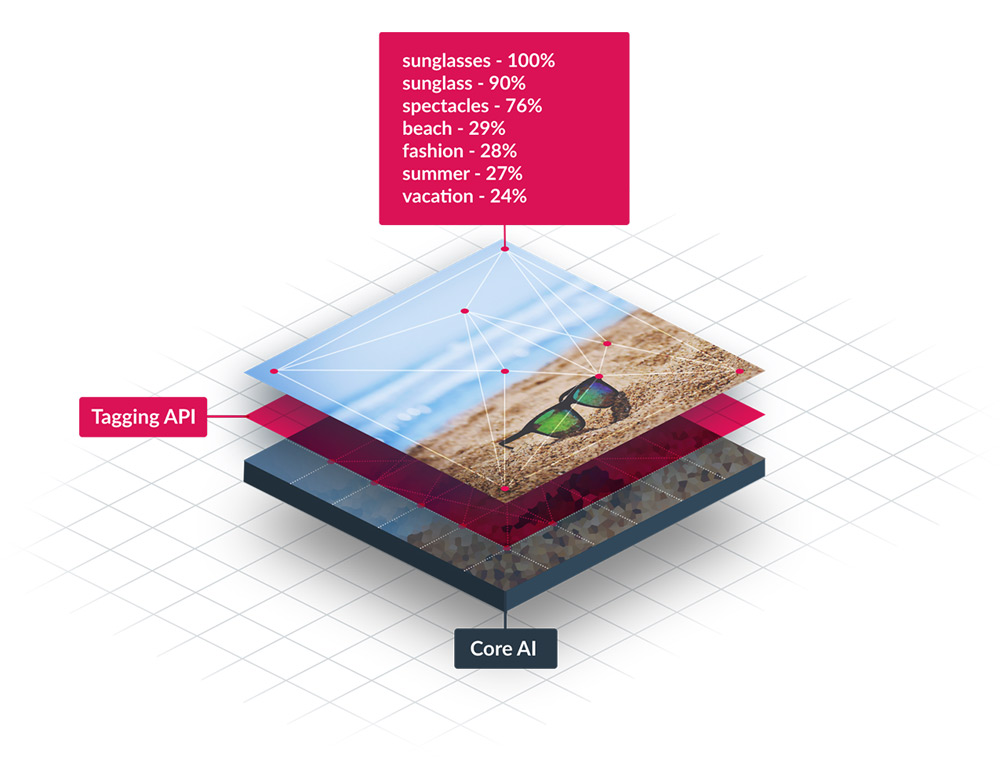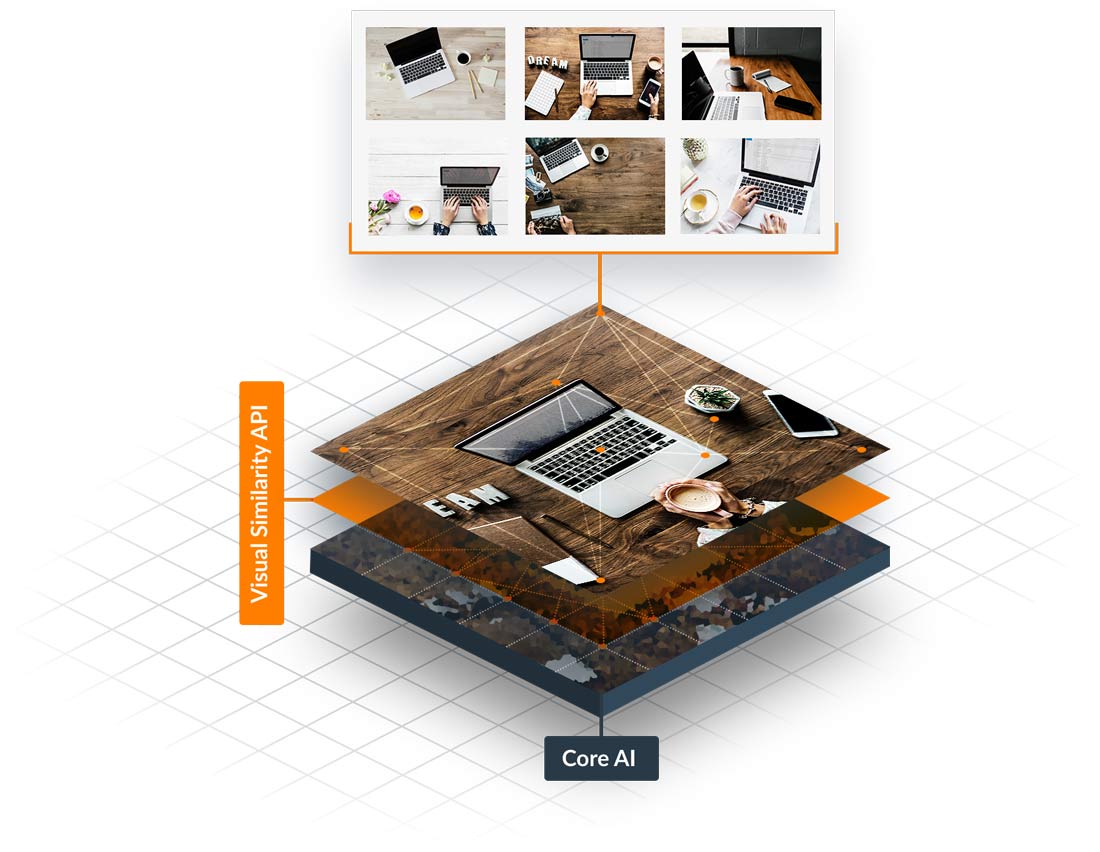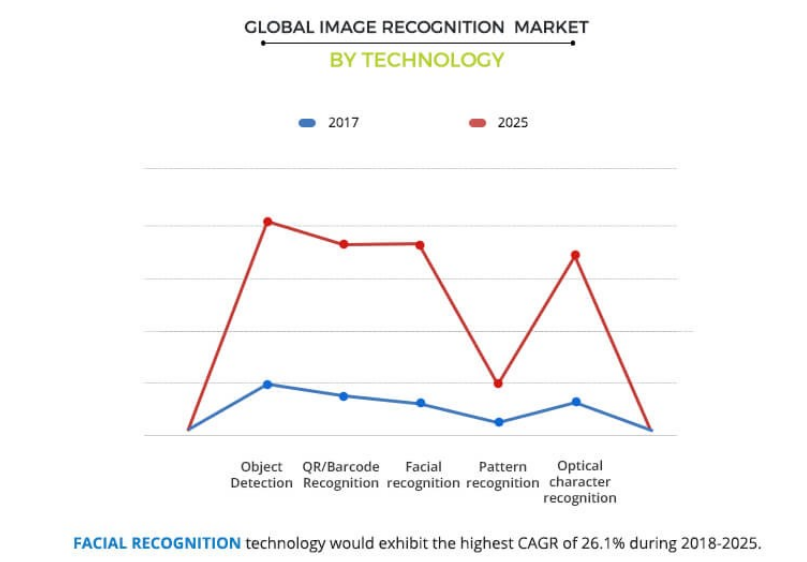The image recognition market is estimated to reach USD 38.9 billion by 2021, compared to USD 15.9 billion in 2016 — more than 100% increase for the projected period, according to data by Markets and Markets research. Companies in e-commerce, automotive, content sharing, healthcare and security are rapidly implementing image recognition and driving the adoption of the technology. Other contributing factors are the sophistication of facial recognition, content moderation and other algorithms, the rise in popularity of media cloud services, the surge in mobile devices equipped with cameras and hardware technological advancements.
What is Image Recognition?
Image recognition refers to technologies that can detect and identify people, places, objects, logos, emotions and other variables in still images and videos. Image recognition is a subset of computer vision and is based on AI and machine learning.
What is image recognition used for?
One of the most widely used applications of image recognition is the automatic detection and tagging of people, objects and places in large visual databases. Other technologies with increasing popularity are facial recognition used in security, biometrics and personal photos platforms, and content moderation for filtering offensive and illegal visual content.
Which Image Recognition Technologies Will be on the Rise in 2020?
Content Moderation
Billions of users share content online and tons of it falls within a range from inappropriate to outright illegal. Platforms operating with user-generated content (UGC) face a significant challenge — how to efficiently and effectively monitor UGC and block inappropriate and offensive images, videos and text. Content moderation done poorly can disturb vulnerable groups, hurt the brands reputation and cause compliance and legal issues.
Who takes care of the “toxic digital garbage”?
Content moderation can be performed by humans, AI or both. More than 100,000 people worldwide monitor the most violent, pornographic, exploitative and illegal content to protect internet users from online bullies and criminals. The job is tough and can take its emotional and mental toll.
Cognizant, one of the top content moderation companies, just recently announced its decision to exit the business and laid off 6,000 people, performing content moderation for clients such as Facebook among others. A memo from the CEO of the company to its employees stated that while thousands of jobs will be eliminated, Cognizant will contribute to the development of machine-learning systems that can replace the human moderators job.
AI-powered or automated content moderation addresses both the ethical and economic side of the problem. The algorithms, processing the majority of the content and sending just a small fraction of it to human moderators can significantly mitigate the detrimental effect this job has on people. Furthermore it is vastly more productive, easier to scale and ultimately less expensive than human moderation.
Automated content moderation explained
Image Tagging
Image tagging is one of the earliest applications of image recognition in businesses, however its adoption will continue to grow as more companies embrace AI to offer better user experience or improve internal workflows.
What is image tagging?
Image tagging is the automatic assignment of relevant tags or keywords to vast collections of images and videos. In order for this to happen a deep learning model is trained to analyze the pixel content of visuals, to extract their features and detect objects of interest. It is a cost-effective and time-saving solution for companies operating with massive amounts of image content often coming from different sources.

This technology, often times combined with complementing capabilities such as image categorization solves a common pain of platforms operating with large image databases — inadequate image descriptions making the images hard to find, while searchability is critical for these platforms. Often times the images are uploaded by different users, vendors or employees which results in incoherent meta-data describing the images or even lack of any description. This is where image tagging comes in — it can tag coherently a multi million image database in a matter of hours.
Image tagging is widely used in stock photography and photo sharing. Read why Unsplash chose to incorporate Imagga image recognition API in their tagging system.
Advertisers, publishers and ad agencies also use the image tagging technology to get better at contextual advertising. SEEDPOST used Imagga Image Tagging and Color Extraction APIs to analyze image content form user’s social accounts and created, based on image understanding, 36 different lifestyles that match the highly customizable experience of KIA’s new K5 (Optima) model. Read the case study.
Visual Search
Visual search means searching for an image with a similar image. The technology allows users to search and find products similar to the ones they shot with their camera or downloaded from the web. In contrast, the search for images as we know it today relies on the accuracy of the images text description. Visual search delivers, where text search fails.

Apparel, home decor brands and retailers are among the early adopters of the technology, as it allows for easier product discovery and shortens the path to conversion.
Another benefit of the technology lies in the ability to provide product recommendations based on true similarity rather than other users’ preferences. Visual search can power similar products suggestions to offer a bigger choice or to provide alternatives to products out of stock.
Read more about how retailers use visual search for a competitive advantage
Facial Recognition
Facial recognition is widely used in government applications and law enforcement, and is gaining more popularity in commercial applications for use cases such as contactless payments, access control through facial biometrics and more. The technology is expected to witness the highest growth rate in the upcoming years due to increased adoption in both law enforcement and non-law enforcement sectors.

Image source: https://www.alliedmarketresearch.com/image-recognition-market
Facial recognition can be used as a key component in every photo organization application or service — allowing its users to search and filter photos by people in the shot.
Editorial Management Systems use facial recognition to identify and recognize celebrities, politicians, and other public figures — for efficient organization and search in large media archives.
In the security and law enforcement sectors, facial recognition is used for detection and prevention of crimes. An example of such application is an app that helps police officers identify individuals on the field giving them data about these individuals, so they know who they are dealing with from a safe distance.
Another typical application of facial recognition is access control. The technology can be used to ensure that only authorized individuals enter facilities like bank vaults, labs and other sensitive locations, as well as for time-tracking of employees.
Are you future proof?
If you are operating with large visual databases on the front-end and/or back-end of your business applications you most probably have a case for visual AI. The wide array of technologies commonly known as image recognition can help you achieve results which would be impossible without AI, or deliver a better user experience to your end users. Our 10+ years of expertise in delivering image recognition solutions to companies across diverse industries, large and small, has shown us that most cases require a custom approach and a combination of 2 or more technologies. We’ve helped companies coming to us with a vague definition of a need or a straightforward list of requirements.
You have a case for image recognition? Let’s talk!

